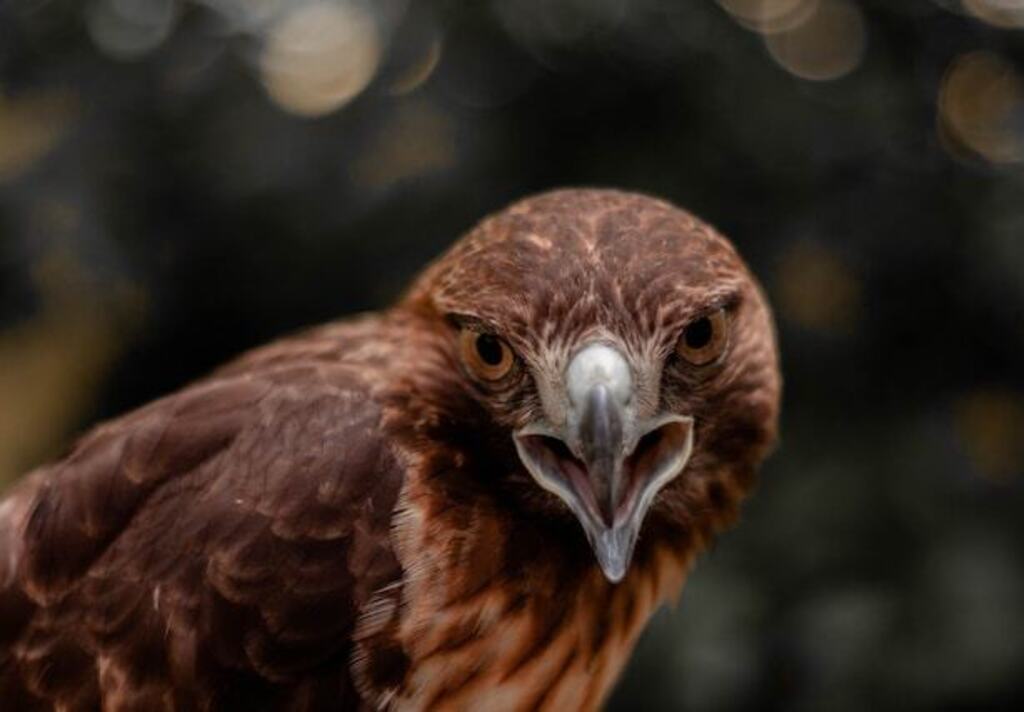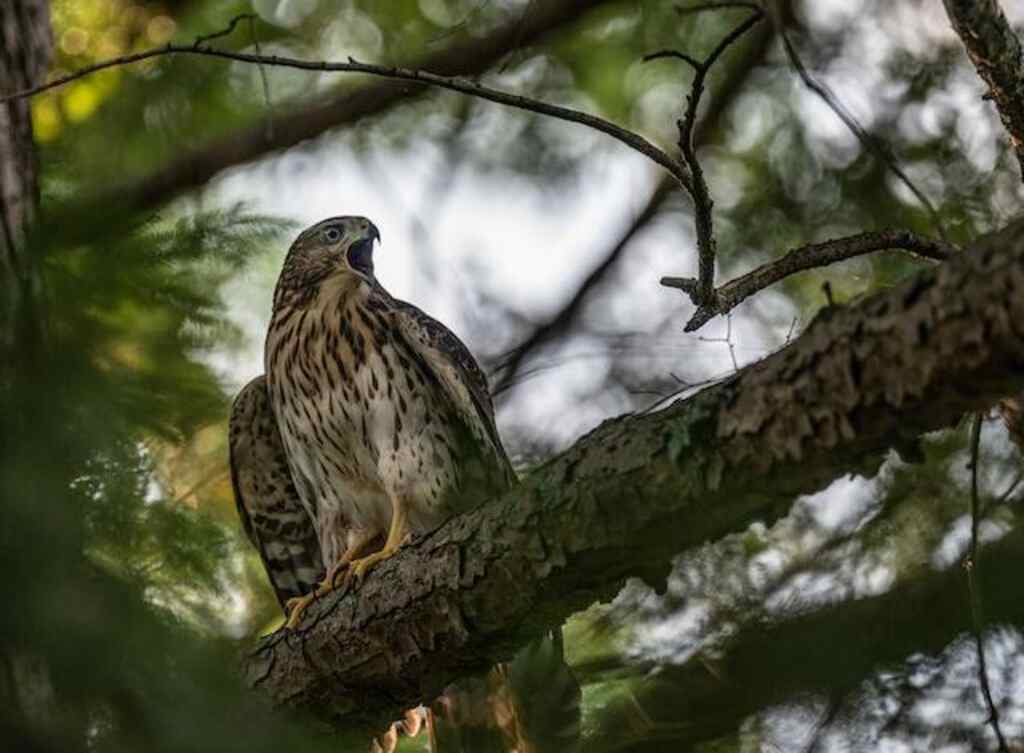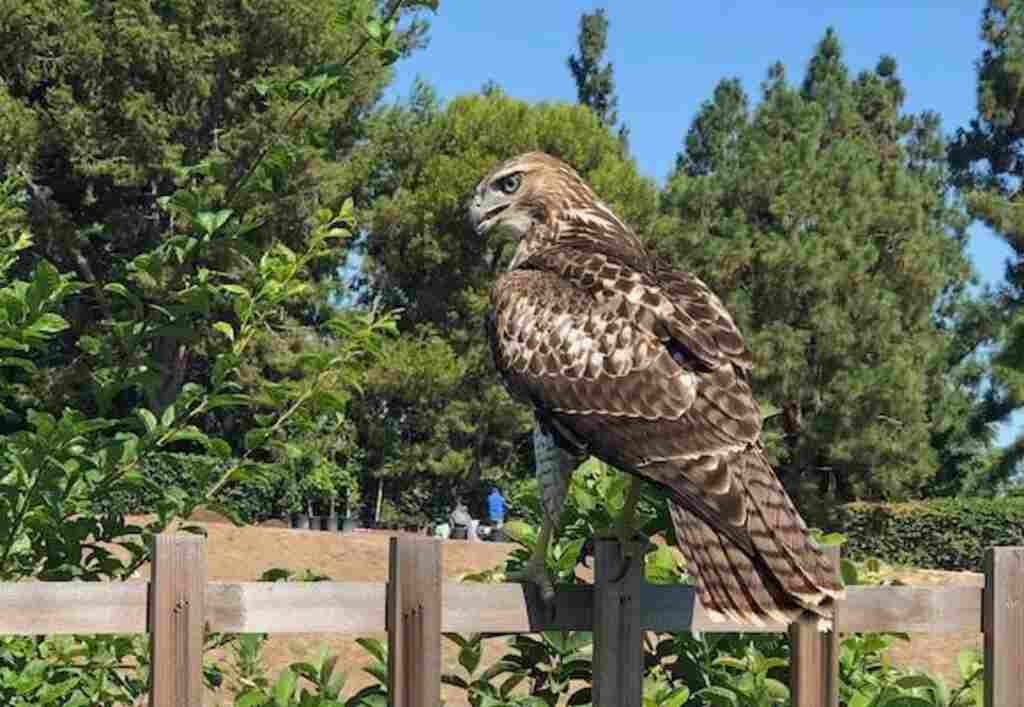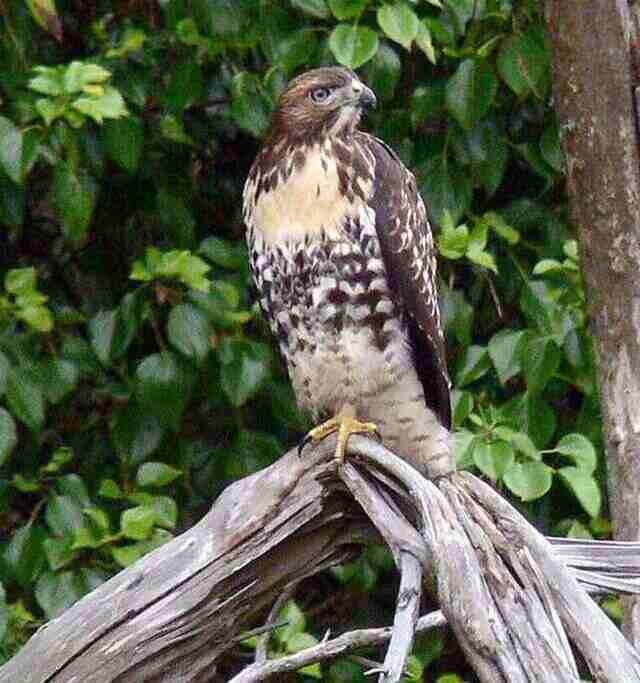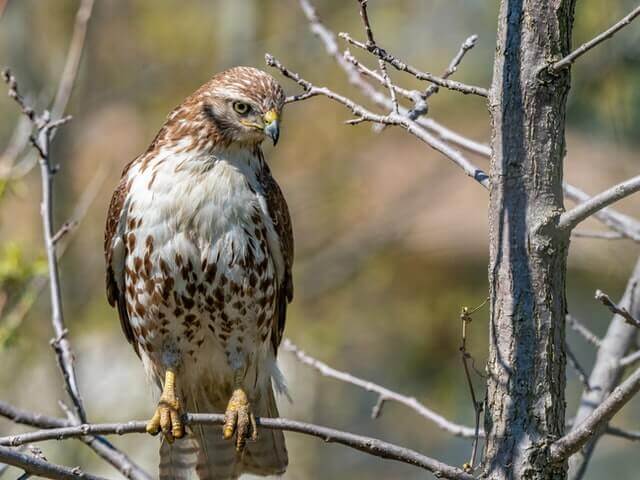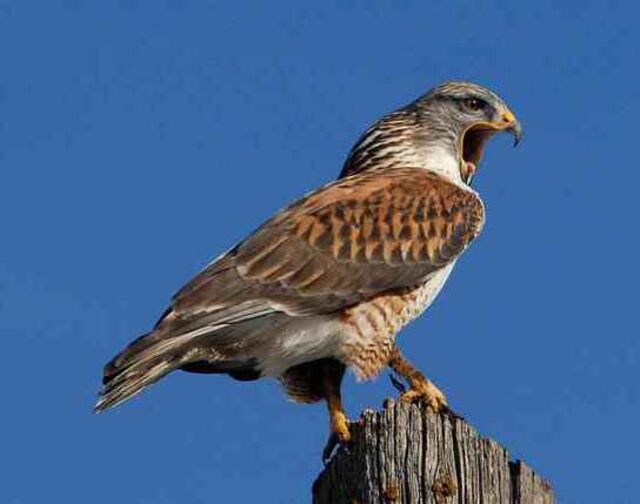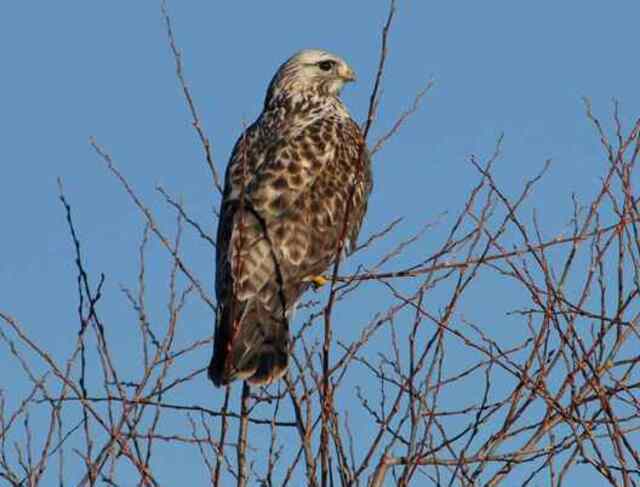Do Hawks Eat Beavers? It may seem like an unlikely match between the aerial hunter and the industrious dam builder, but nature never ceases to surprise us!
Hawks, fascinating birds of prey renowned for their hunting prowess and aerial acrobatics, have a diverse diet that includes small mammals, birds, reptiles, and insects. But what about beavers?
Join us as we embark on an exploration of hawks’ dietary habits, uncovering whether beavers make their way onto their menu.
Discover the hunting skills of these apex predators and the fascinating range of prey they target, revealing the intriguing secrets of their culinary preferences.
Table of Contents
- 1 Key Takeaways
- 2 Overview of Hawk’s Diet
- 3 Hawk’s Hunting Skills
- 4 Types of Prey
- 5 Do Hawks Eat Beavers
- 6 Beavers as Prey
- 7 Hawk’s Attack Strategy
- 8 Evidence of Hawk’s Preying on Beavers
- 9 Limitations on Hawk’s Ability to Prey on Beavers
- 10 Impact of Hawk’s Diet on Ecosystem
- 11 Conservation of Beavers
- 12 Frequently Asked Questions
- 13 Conclusion
- 14 Author
Key Takeaways
- Hawks have a diverse diet that includes small mammals, birds, reptiles, and insects, and they are opportunistic hunters that rely on their sharp talons and beaks to capture and kill their prey.
- Despite their size and strong build, beavers are an important food source for hawks, and hawks are able to take down beavers due to their hunting skills and attack methods.
- Hawks have a wide range of prey selection, and their hunting strategies are adapted to each specific target, with evidence of hawks preying on beavers observed in the wild.
- Protecting beavers is important for maintaining water quality, stabilizing stream banks, and providing habitat for a diverse range of species, and understanding the dynamics of predator-prey relationships involving hawks and beavers is essential for maintaining ecological balance.
Overview of Hawk’s Diet
The hawk’s diet is a widely studied topic that sheds light on the intricate relationships between predator and prey, highlighting the importance of understanding the ecological balance of our natural world.
Hawks are known to be opportunistic predators, feeding on a wide variety of prey, including small mammals, birds, reptiles, and insects.
Their prey diversity is crucial in maintaining the ecosystem balance, as they help regulate the populations of their prey species.
Hawks rely on their sharp talons and beaks to capture and kill their prey, often using their keen eyesight to locate their target from high above.
Understanding the intricacies of the hawk’s diet and hunting skills is essential in comprehending the dynamics of predator-prey relationships in the wild.
Hawk’s Hunting Skills
Hawks possess remarkable hunting skills, enabling them to capture a variety of prey with impressive agility and precision.
Their aerial attacks are one of their greatest strengths, allowing them to swoop down on unsuspecting prey from above.
Hawks also have incredibly sharp eyesight, which they use to scan the ground for potential prey. Depending on the environment they are hunting in, hawks may use different techniques to catch their prey.
For example, in open fields, they may rely on speed and agility to catch small mammals like rodents, while in wooded areas, they may use their sharp talons to grab onto branches and ambush their prey from above.
Overall, hawks are versatile predators that are able to adapt their hunting techniques to suit their environment and prey.
In the subsequent section, we will explore the types of prey that hawks commonly hunt.
Types of Prey
The hunting abilities of hawks are impressive, and they can prey on a wide variety of animals. Small creatures such as rodents, reptiles, and insects are often the targets of hawks.
However, hawks are also capable of taking down larger prey such as rabbits, squirrels, and even small mammals like beavers.
Understanding the types of prey that hawks hunt is crucial to understanding their role in the ecosystem and how they contribute to maintaining a balance in nature.
Small Animals
Small animals are often preyed upon by larger predators, such as the hawk that swoops down with the speed of lightning to catch its target. The predator-prey dynamics are essential in maintaining ecological balance.
Small animals like mice, rats, and squirrels are often hunted by hawks. These predators have sharp talons and beaks that can quickly kill their prey.
Hiding in burrows or trees may not always be enough to escape their keen eyesight and agility.
Despite their size, small animals play a vital role in the food chain, and their survival is crucial for the overall ecosystem.
However, for hawks, small animals are just a small part of their diet, and they often target larger prey like rabbits and even snakes.
Larger Prey
Larger prey, such as rabbits and snakes, are crucial to the survival of hawks and play a significant role in maintaining ecological balance.
Predators and prey are interconnected in a complex web of relationships, where the success of one species relies on the availability of another.
Hawks are apex predators, meaning they sit at the top of the food chain, and their diet consists mostly of small mammals, birds, and reptiles.
However, larger prey items like rabbits and snakes provide a rich source of protein, and are essential for the hawk’s survival.
These larger prey items also contribute to the balance of the ecosystem by controlling populations of smaller prey, thereby preventing overgrazing and preserving vegetation.
The predator-prey dynamics between hawks and their larger prey have significant ecological implications, as they help maintain the diversity and stability of the ecosystem.
However, hawks are also known to prey on larger animals like beavers, which can have a significant impact on their populations.
Do Hawks Eat Beavers
Hawks primarily prey on smaller mammals, birds, reptiles, and insects. While they typically don’t target beavers as a primary food source, there have been documented cases of hawks preying on smaller beavers.
According to a study, hawks account for about 7% of beaver deaths in the wild. However, these instances are relatively uncommon, and hawks generally focus on more suitable prey based on their size and hunting techniques.
Beavers as Prey
Beavers are an important food source for many predators, including hawks. These large rodents are found in habitats such as rivers, streams, and lakes, which makes them an accessible target for many predators.
Hawks, in particular, are known to prey on beavers during their migration patterns. It is interesting to note that hawks are able to take down these large rodents despite their size and strong build.
This is due to their sharp talons and strong beaks that are capable of penetrating the beaver’s tough fur and skin. In addition, hawks are known for their impressive hunting skills and strategic attack methods.
To further understand their hunting techniques, let us examine the hawk’s attack strategy in the subsequent section.
Hawk’s Attack Strategy
Avian predators have evolved certain tactics to effectively capture their prey, such as the hawk’s strategic attack methods. Hawks have a wide range of prey selection, and their hunting strategies are adapted to each specific target.
They use their sharp talons and beaks to capture their prey, often targeting smaller animals such as rodents and birds. However, larger prey such as beavers may also be taken down by hawks.
The strategic advantages of hawks include their keen eyesight, speed, agility, and ability to surprise their prey.
Their attack methods can vary depending on the size and behavior of their prey, but they often use surprise attacks and aerial attacks to catch their prey off guard.
Hawks have been known to attack beavers by swooping down from above, using their talons to grasp onto the beaver’s back or head, and then quickly killing the beaver with a bite to the neck.
While some may doubt the ability of hawks to take down larger prey, evidence of hawk’s preying on beavers has been observed in the wild.
Evidence of Hawk’s Preying on Beavers
Observations in the wild and analyses of hawk’s diets have provided evidence of their preying on beavers.
These observations suggest that hawks are opportunistic predators that can target a variety of prey depending on their availability and nutritional value.
Analysis of hawk’s diets shows that beavers make up a significant portion of their diet in certain regions, indicating that they may play an important role in the ecosystem as a predator of beavers.
Observations in the Wild
In the natural habitat, the diet of hawks has been observed to include a variety of prey, some of which may surprise us.
Behavior patterns and habitat preferences seem to play a crucial role in determining what a hawk chooses to eat.
Some of the prey that hawks have been observed to feast on include snakes, rodents, small mammals, and birds.
These predators are known to be skilled hunters and have been seen swooping down from the sky to catch their prey.
They use their sharp talons to grab onto their prey and use their beak to deliver a killing blow.
Despite the common belief that beavers are not on a hawk’s menu, there have been instances where hawks have been seen preying on beavers.
The versatility of a hawk’s diet is fascinating and shows how adaptable they can be. The analysis of hawk’s diet can provide us with insights into their behavior and habitat preferences.
Analysis of Hawk’s Diet
A glimpse into the analysis of hawk’s feeding habits reveals their remarkable adaptability, as they have been known to prey on a variety of creatures, ranging from rodents to birds of prey.
In fact, hawks have a diverse diet that includes mammals, reptiles, fish, and insects. To emphasize this point, consider the following table:
| Prey type | Examples |
|---|---|
| Mammals | Rabbits, squirrels, mice |
| Reptiles | Snakes, lizards, turtles |
| Fish | Trout, salmon, catfish |
| Insects | Grasshoppers, beetles, crickets |
| Birds | Pigeons, doves, small songbirds |
This table highlights the fact that hawks are not limited to one type of prey, but rather have the ability to adapt to their environment and prey on whatever is available.
This adaptability is what makes the question whether hawks eat beavers a valid one.
However, despite their adaptability, there are limitations on the hawk’s ability to prey on beavers, which will be discussed in the subsequent section.
Limitations on Hawk’s Ability to Prey on Beavers
The ability of hawks to prey on beavers is not without limitations. One of the key limitations is the size and strength of the beavers themselves. Beavers are relatively large and strong animals, and as such, they may be more difficult for hawks to capture and kill.
Additionally, hawks may face competition from other predators, such as coyotes and wolves, who also prey on beavers.
Size and Strength of Beavers
Beavers, as the second-largest rodent in the world, can weigh up to 60 pounds and have the ability to fell trees with their powerful teeth and strong jaws.
Their anatomy is specifically designed for their habitat, with webbed hind feet and a flat tail that helps them swim and steer in water.
Due to their size and strength, hawks may have difficulty preying on beavers, as they are not easily overpowered.
In fact, beavers are known to be preyed upon by larger predators such as wolves and bears. However, hawks may still attempt to hunt beavers, especially if other prey items are scarce.
Despite their impressive abilities, beavers still face competition with other predators in their ecosystem, as the struggle for survival continues.
Competition with Other Predators
Predators in the ecosystem face competition with each other, and the factors that determine which species will come out on top are complex.
One key factor is the size and strength of the predator, which determines its ability to take down prey.
However, hunting techniques also play a role in predator success.
For example, wolves are highly efficient at hunting in packs, which allows them to take down larger prey.
On the other hand, coyotes are skilled at hunting small and agile prey, and are able to adapt to a wide range of environments.
When hawks compete with other predators for food, they may have an advantage due to their aerial hunting abilities.
However, the impact of their diet on the ecosystem is complex and interconnected, and must be considered in the context of the broader food web.
Impact of Hawk’s Diet on Ecosystem
One potential factor that may influence the balance of the ecosystem is the diet of hawks. As predators, hawks play an important role in regulating the populations of their prey species.
If hawks consume too many individuals of a certain species, it can lead to a decline in that species, which can have ripple effects throughout the entire ecosystem.
Conversely, if hawks are unable to find enough prey, it can impact their own survival and lead to a decrease in their population.
Therefore, the predator-prey relationships between hawks and their prey are crucial for maintaining a healthy balance in the ecosystem.
Understanding the impact of hawk’s diet on the ecosystem can help us better manage and conserve these species and their habitats.
This is particularly important for beavers, as they are an important prey species for hawks.
In the next section, we will explore the conservation efforts being made to protect beavers and their role in the ecosystem.
Conservation of Beavers
The conservation of beaver populations has become increasingly important in recent years, with a study finding that beaver dams can store up to six times more carbon than a similar area without a dam.
This highlights the crucial role that beavers play in maintaining the health of ecosystems, particularly in riparian zones.
These zones are vital for maintaining water quality, stabilizing stream banks, and providing habitat for a diverse range of species.
Habitat restoration efforts have focused on reintroducing beavers to areas where they have been extirpated, as well as protecting existing populations.
By promoting beaver conservation, we can help to restore and maintain healthy aquatic ecosystems, and ensure that our planet’s natural resources are preserved for generations to come.
Frequently Asked Questions
How do beavers defend themselves against hawks?
Beavers have a range of defense mechanisms against predators, including a powerful bite, ability to swim and dive, and the construction of lodges and dams. Hawks primarily hunt by swooping down on their prey from above, so beavers can avoid predation by staying in the water or seeking refuge in their structures.
Can hawks hunt in water, where beavers typically reside?
Ironically, hawks are not known for their water hunting abilities, while beavers prefer aquatic habitats. However, hawks use various hunting techniques, such as soaring and hovering, to capture prey on land.
Do all species of hawks prey on beavers?
The coexistence of hawks and beavers is possible, but the ecological impact of hawks on beaver populations varies among species. While some hawks may prey on beavers, not all species exhibit this behavior. The relationship between these species is complex and warrants further study.
How do hawks recognize and target beavers as prey?
An analysis of the predator prey relationship between hawks and beavers reveals that hawk vision plays a crucial role in identifying and targeting beavers as prey. Environmental factors such as water depth and vegetation cover also influence hunting success rates.
Are beavers a significant part of a hawk’s overall diet?
The beaver population is not a significant part of a hawk’s overall diet. Hawk behavior is largely determined by their hunting strategy and the availability of prey. While beavers may be targeted by hawks, they are not a primary food source.
Conclusion
Hawks are known for their predatory nature and sharp hunting skills. They are versatile in their diet and feed on a variety of prey, including rodents, reptiles, insects, and other birds.
However, the question remains, do hawks eat beavers? While beavers are not a common prey for hawks, they are not entirely off the menu.
Hawks primarily hunt their prey by soaring high in the sky and diving at high speeds to catch their target.
They use their sharp talons to grab and hold their prey, and their hooked beaks to tear flesh. Beavers are known for their large size and aquatic lifestyle, which makes them a challenging prey for hawks.
However, there have been documented cases of hawks preying on beavers, especially the smaller ones.
According to a study, hawks are responsible for about 7% of beaver deaths in the wild.
While this may seem like a small percentage, it is still significant considering the role beavers play in maintaining healthy ecosystems.
Beavers are known to create dams that help regulate water flow, prevent erosion, and provide habitat for other animals. Therefore, any impact on their population can have a ripple effect on the entire ecosystem.
In conclusion, while hawks do not commonly prey on beavers, they are still a potential threat.
The impact of hawk predation on beavers may seem small, but it can have significant consequences for the entire ecosystem.
It is essential to conserve the beaver population to maintain a healthy balance in the environment.

